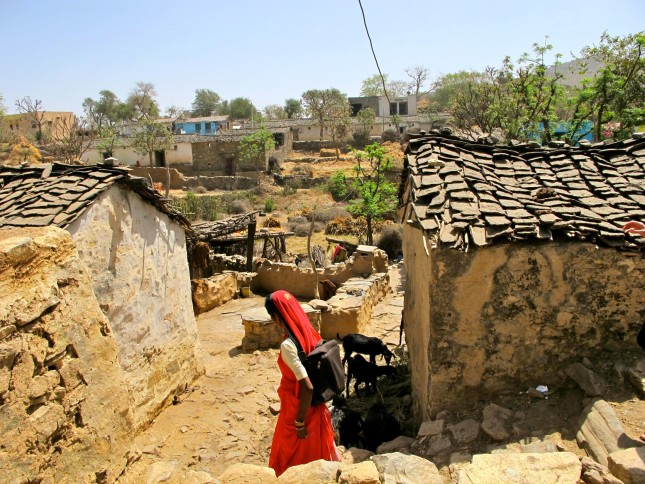-
Midwives Needed to Achieve Universal Health Coverage by 2030
March 25, 2020 By Deekshita Ramanarayanan We are in the decade of action, said Anneka Knutsson, Chief of the Sexual and Reproductive Health Branch at the United Nations Population Fund (UNFPA), at a recent Wilson Center event on midwives’ crucial role in achieving universal health coverage by 2030. The World Health Organization (WHO) has designated 2020 as the Year of the Nurse and the Midwife to celebrate the accomplishments and importance of nurses and midwives in providing not just maternal health care, but care across the lifespan. Currently, 22 million nurses and 2 million midwives globally deliver 80 percent of all healthcare services in low-resource settings. However, the world will need 9 million more nurses and midwives by 2030 to meet rising healthcare demands.
We are in the decade of action, said Anneka Knutsson, Chief of the Sexual and Reproductive Health Branch at the United Nations Population Fund (UNFPA), at a recent Wilson Center event on midwives’ crucial role in achieving universal health coverage by 2030. The World Health Organization (WHO) has designated 2020 as the Year of the Nurse and the Midwife to celebrate the accomplishments and importance of nurses and midwives in providing not just maternal health care, but care across the lifespan. Currently, 22 million nurses and 2 million midwives globally deliver 80 percent of all healthcare services in low-resource settings. However, the world will need 9 million more nurses and midwives by 2030 to meet rising healthcare demands.
We are in the decade of action, said Anneka Knutsson, Chief of the Sexual and Reproductive Health Branch at the United Nations Population Fund (UNFPA), at a recent Wilson Center event on midwives’ crucial role in achieving universal health coverage by 2030. The World Health Organization (WHO) has designated 2020 as the Year of the Nurse and the Midwife to celebrate the accomplishments and importance of nurses and midwives in providing not just maternal health care, but care across the lifespan. Currently, 22 million nurses and 2 million midwives globally deliver 80 percent of all healthcare services in low-resource settings. However, the world will need 9 million more nurses and midwives by 2030 to meet rising healthcare demands.
Midwives can provide 87 percent of sexual, reproductive, and maternal health services. But before that can happen, such services must be legislated and regulated, said Knutsson. And an enabling environment that allows midwives to offer this full scope of services must be provided. Universal health coverage is a goal within Sustainable Development Goal 3 (Ensure healthy lives and promote well-being for all at all ages). Target 3.8 (Achieve universal health coverage) includes financial risk protection and access to high-quality health services, medicines, and vaccines. While sexual and reproductive health and rights (SRHR) is a crucial part of such universal coverage, we cannot take for granted that it will automatically be included, said Knutsson.
Due to a hostile response to conversations about SRHR, advocates have to defend basic human rights rather than pushing the agenda forward, said Elena Ateva, Advocacy Manager at White Ribbon Alliance. We are “defending what is left,” she said. However, we need progressive approaches to push the agenda to achieve these ambitious goals by 2030. Midwifery care is cost-effective. “We know the return on investment is 16-fold, but it is an investment,” said Franka Cadée, President of the International Confederation of Midwives.
Quality is defined by what women want
The conversation around universal health coverage has to be a conversation around quality and quality of care, said Ateva. “Quality” must be defined by women, not by healthcare providers or health systems. White Ribbon Alliance’s 2019 report, What Women Want, revealed that the most important element of quality care for women was respect and dignity. How “respectful care” is defined depends on where women live, their culture and traditions around maternal health, and other factors. However, we have to keep asking people what they need to ensure respectful and dignified care, said Ateva. Midwives can provide the full scope of SRHR services, from abortion, contraception, and pregnancy care, making them well equipped to address what women want from their healthcare.
This is especially true in communities that have been continuously excluded and marginalized in maternal healthcare. Indigenous women, women with disabilities, and members of the LGBTQ community all have unique health needs and need to be included in the decision-making process. We cannot make policies for someone else without being in their shoes—knowing what they need and are facing every day—and having them at the table, said Ateva. It is important to respect the ancient traditions and customs that indigenous women value in their maternal healthcare that modern health systems have disregarded. Māori midwives combine their medical training and indigenous knowledge for midwifery, she said. Training people from indigenous communities as midwives allows them to combine their medical skills and their indigenous knowledge to better respect traditions that can enhance maternal health, said Cadée.
Midwives as Leaders
Most midwives are women, said Cadée, and therefore experience many of the same issues and needs as the women they serve. They provide nearly constant care for their patients and can often experience “compassion fatigue,” particularly when faced with mistreatment and disrespect, in addition to long work hours. Because midwifery is commonly seen as “women’s work,” it is often devalued. Midwives around the world have reported going several months without a paycheck. In some instances, they are not paid at all. Midwives also report that some obstetricians and systems they work in disrespect them. However, in many low-resource settings, many obstetricians are actually trained by midwives.
Midwives need to take part in the decision-making process as leaders. “I think a lot of people are happy for midwives to do the work,” said Cadée. But to improve and change systems, they need to be listened to and respected. Midwives are often part of the communities they serve and can offer that unique and important perspective in their decision-making. “Midwives don’t need to be empowered – midwives are very, very powerful,” said Cadée, “Midwives simply need to be listened to. So I think what we need to do is to dare to listen.”
Sweden: Where Midwives are Valued
In Sweden, midwives have been an integral part of the health care system for more than 300 years, said Marie Klingberg-Allvin, Midwife and Professor in Global Sexual and Reproductive Health at Dalarna University, Karolinska Institute in Sweden and Adjunct Professor at the University of Michigan. Swedish midwives are able to work independently and autonomously according to the standards set by the International Confederation of Midwives. They are given the space to provide care from a life course perspective, meeting with women and partners for counseling on planning pregnancies, birth and delivery, and other SRHR services. Eighty percent of induced abortions in Sweden are performed early and managed by midwives, said Klingberg-Allvin. This change could be achieved globally only through societal efforts like strong governance and policy. Gender-intentional governments that give status to SRHR and gender equity in health care would be vital, she said.
Sweden also has emphasized the importance of educating midwives. Today, 13 midwifery education programs in Sweden not only teach clinical skills, but also train midwives in reading and conducting research to prepare them for leadership roles in academic environments and their own professional organizations.
However, there is still work to be done, said Klingberg-Allvin. Less than ideal workplace conditions are the center of the current debate on midwifery in Sweden. Midwives have shared stories of how they have been disrespected and mistreated while providing care. The younger generation of midwives also questions why they have to tolerate poor working conditions. As a result, some fear midwives will abandon the field, leading to a shortage of healthcare workers. Sweden has taken steps to address these concerns, establishing a union for midwives to negotiate their salaries and working conditions and to be in the decision-making process. One problem, said Klingberg-Allvin, is that politicians don’t listen to the medical professionals, including physicians, midwives, or nurses. And decisions that are not evidence-based have led to terrible consequences, she said.
While other countries can follow the more forward-looking parts of the Swedish model to promote midwifery, capacity development can take time. However, immediate, comprehensive, and sustainable solutions are needed. “We cannot wait 300 years,” said Ateva. “Women need help now.”
Sources: United Nations Population Fund, White Ribbon Alliance, World Health Organization
Photo Credit: Village Health Worker doing her village round in Rajasthan, India. Courtesy of Mandira Paul/Uppsala University and Karolinska Institutet, All Rights Reserved.
 A Publication of the Stimson Center.
A Publication of the Stimson Center.

 We are in the decade of action, said Anneka Knutsson, Chief of the Sexual and Reproductive Health Branch at the
We are in the decade of action, said Anneka Knutsson, Chief of the Sexual and Reproductive Health Branch at the 

